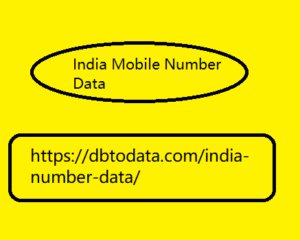Post by account_disabled on Mar 11, 2024 10:58:51 GMT 1
What are Signed Exchanges (SXG)? What could be the advantages of using them? During Google I/O 2021, Jeffrey Jose (Google product manager) talks about it, saying that Google Search will preload websites that use them. Alessio Pomaro Alessio Pomaro June 9, 2021 •5 min read What is SXG? Signed Exchanges can be an interesting concept for SEO and UX What is SXG? Signed Exchanges can be an interesting concept for SEO and UX What is Signed Exchange (SXG)? A Signed Exchange is a method of distributing a resource that allows you to authenticate its origin regardless of how it was delivered. In practice, it allows publishers to make content " portable " that can be redistributed to other websites while maintaining the integrity and attribution of the origin.
This possibility of decoupling between the original content India Mobile Number Data and the " copies " available in other properties, introduces several interesting possibilities such as prefetching , offline experiences and asset delivery from third-party caches . Furthermore, involving the topic of Core Web Vitals, the implementation of SXG can improve the Largest Contentful Paint (LCP) . What are the benefits? Signed exchanges (SXGs) allow a website to cryptographically sign a request/response pair (an " HTTP exchange ") in a way that allows the browser to verify the origin and integrity of the content regardless of how the content is been distributed. As a result, the browser may display the URL of the originating site in the address bar, rather than the URL of the server that delivered the content.

This probably seems like a complex concept to you, but with a simple example it will quickly become clear. When you do a search and access an AMP result , you are actually viewing a cached copy of the content on a Google server. If you check the URL in the address bar, in fact you have immediate proof of this. An example of how an AMP result URL appears without SXG An example of how an AMP result URL appears without SXG What follows, however, is an example where the result from Google's AMP cache is displayed, but the source URL is shown. Using SXG, the browser can display the URL of the original resource even if it is delivered from another server Using SXG, the browser can display the URL of the original resource even if it is delivered from another server We can therefore say that signed exchanges make content " portable ": content provided via an SXG can be easily distributed from third-party caches while maintaining full certainty of origin.
This possibility of decoupling between the original content India Mobile Number Data and the " copies " available in other properties, introduces several interesting possibilities such as prefetching , offline experiences and asset delivery from third-party caches . Furthermore, involving the topic of Core Web Vitals, the implementation of SXG can improve the Largest Contentful Paint (LCP) . What are the benefits? Signed exchanges (SXGs) allow a website to cryptographically sign a request/response pair (an " HTTP exchange ") in a way that allows the browser to verify the origin and integrity of the content regardless of how the content is been distributed. As a result, the browser may display the URL of the originating site in the address bar, rather than the URL of the server that delivered the content.

This probably seems like a complex concept to you, but with a simple example it will quickly become clear. When you do a search and access an AMP result , you are actually viewing a cached copy of the content on a Google server. If you check the URL in the address bar, in fact you have immediate proof of this. An example of how an AMP result URL appears without SXG An example of how an AMP result URL appears without SXG What follows, however, is an example where the result from Google's AMP cache is displayed, but the source URL is shown. Using SXG, the browser can display the URL of the original resource even if it is delivered from another server Using SXG, the browser can display the URL of the original resource even if it is delivered from another server We can therefore say that signed exchanges make content " portable ": content provided via an SXG can be easily distributed from third-party caches while maintaining full certainty of origin.
